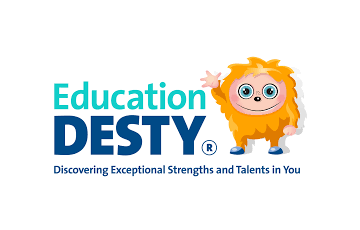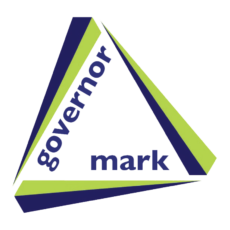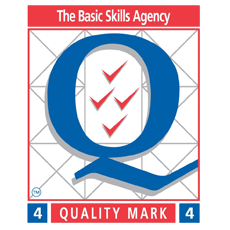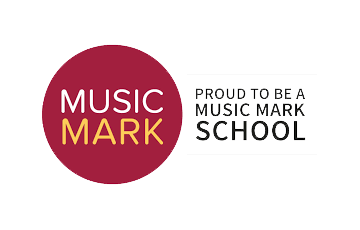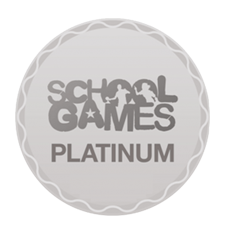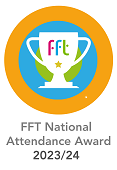Art
Art Subject Leader

Miss Grant
Intent

At Eccleston Lane Ends our intent for the Art and Design element of our school curriculum is to value children as individuals and encourage expressive and dynamic personalities. Art and Design is a subject within which the importance lies in children creating work unique to them wherein they are able to express themselves visually and respond critically to their world. Through this multi-sensory process children develop visual perception and visual literacy and the confidence and self-esteem to evaluate their process and final product. We encourage children to explore ideas and experiment with skills and processes and this allows them to creatively grow.
We want our children to use the local area as inspiration, to learn from other cultures and to respect diversity. To that end, we have carefully selected a wide range of unique and diverse artists, craft makers and designers for children to study. Whenever possible children work alongside artists, display their work in a gallery or visit art exhibitions. We also use local amenities wherever possible, to find inspiration from our local environment and this increases visual art opportunities in school. Children are not afraid to take risks and experiment with different media to create their very own masterpieces –sketching and experimentation plays a key part in documenting the children’s creative discoveries to enable them to visually see their artistic progress. We aim for the children to take a journey of artistic discovery during art lessons, whilst developing key skills. At Eccleston Lane Ends, we want our children to love art, craft and design! We want them to have no limits to what their ambitions are and to grow up wanting to be illustrators, graphic designers, fashion designers, curators, architects or printmakers. Our Art curriculum is designed to engage, inspire and challenge pupils, whilst equipping them with the knowledge and skills to be able to experiment, invent and create their own works of art.
Implementation

The skills and knowledge that children will develop throughout each art topic are mapped across each year group and are progressive throughout the school. The emphasis on knowledge ensures that children understand the context of the artwork, as well as the artists that they are learning about and being inspired by. This enables links to other curriculum areas, with children developing a considerable knowledge of individual artists, as well as individual works and art movements. A similar systematic approach to the development of artistic skills means that children are given opportunities to express their creative imagination, as well as practise and develop mastery in the key processes of art: drawing, painting, printing, textiles and sculpture.
Enhancement art opportunities ensures that art is given high status in the curriculum. This includes the school’s participation in local art competitions, art newsletters showcasing art in school, wellbeing projects and opportunities to work alongside artists. These opportunities enable further focus on children’s artistic skills and knowledge as well as promoting collaboration with artists and community galleries.
The school’s high-quality art curriculum is supported through the availability of a wide range of quality resources, which are used to support children’s confidence in the use of different media. The school’s unique cultural locality is also utilised, with planned opportunities for learning outside the classroom, as well as the involvement of artists with specialist skills from the local and wider community.
How does this look in the classroom?

At Lane Ends, every child has a knowledge organiser at the front of their sketchbooks. These knowledge organisers allow children to refer back to key vocabulary when needed. They also give children an insight towards what each module will be about.
Each child has a sketchbook. We give the child ownership of their sketchbook in order to foster their sense of creativity. Children use their sketchbooks to make initial sketches, develop skills, record ideas and develop opinions.
Throughout the ELE journey, every child is given the opportunity to learn the skills of drawing, painting, printing, sculpture and digital art through the exploration of an initial key artist, craft maker or designer and their work
Through in-depth discussion, the pupils explore how their art can share commonalities with famous art and use subject-specific vocabulary to discuss key artworks and their own work.
In the development of confident art critics, the pupils share their opinions and make informed observations about what will improve their own practical work.
Cross-curricular links are promoted to allow all children to deepen their understanding across the curriculum, including the use of technology, and artworks from year group specific historical, geographical and scientific contexts.
Opportunities for children to visit local art galleries and museums are planned for, as well as visits from local artists.
Teachers follow a clear progression of skills which ensures all pupils are challenged in line with their year group expectations and are given the opportunity to build on their prior knowledge.
Opportunities to reflect and develop, including through the use of sketchbooks, and chances for self and peer-assessment are planned into each unit of study in KS1 and KS2.
Early Years

Through Expressive Arts children are encouraged to explore different media, explore how media can be combined to create different effects and develop a range of skills and techniques experimenting with colour, design, texture, form and function. Children are given daily access to a range of creative opportunities and enjoy our carefully planned and well-resourced creative areas both indoors and out. Children are encouraged to create on both small and large scales and our outdoor environment supports this well. Children are encouraged to develop their communication and language skills through talking about their creations and sharing these with others to build confidence and raise self-esteem.
Impact

The structure of the art curriculum ensures that children are able to develop their knowledge and understanding of the work of artists, craftspeople and designers from a range of times and cultures and apply this knowledge to their own work.
The consistent use of children’s sketchbooks means that children are able to review, modify and develop their initial ideas in order to achieve high quality outcomes. Children learn to understand and apply the key principles of art: line, tone, texture, shape, form, space, pattern, colour, contrast, composition, proportion and perspective. The opportunity for children to refine and develop their techniques over time is supported by effective lesson sequencing and progression between year groups. This also supports children in achieving age related expectations at the end of their cohort year.
Classroom displays reflect the children’s sense of pride in their artwork and this is also demonstrated by creative outcomes across the wider curriculum. The school environment also celebrates children’s achievements in art and demonstrates the subject’s high status in the school, with outcomes, including sculptures, enhancing the outdoor, as well as indoor, environment. The Art curriculum at Lane Ends contributes to children’s personal development in creativity, independence, judgement and self-reflection.

Assessment
Self- assessment – evaluation and analysis of own work is built into the structure of lessons. At the end of the topic there are a bank of assessment statements for teachers to use to inform their judgements reflecting secure understanding and greater depth.
Peer assessment- evaluation and analysis of the work of others in the class, great artists, architects and designers is built into the structure of lessons and critical statements and judgements are supported by verbal feedback, building the use of art language to express their opinions clearly.
Teacher assessment in lesson – verbal feedback is given in the lesson modelling critical analyses and support of how to develop ideas and work.
Teacher assessment at the end of the year- teachers can assess whether children have met the end points for that year group. Any barriers or gaps identified in the pupil’s learning can then be passed onto the following teacher. Plans or interventions can be put into place to ensure that these skills are practiced and embedded to minimise children falling behind.
Art Differentiation
Various strategies can be used within lessons to support and extend pupils learning styles and abilities.
Mixed ability pairing, where pupils can support each other though discussion and sharing ideas; and support each other though stages of learning new techniques and processes.
Teachers and TAs are available to support pupils when needed.
Pupils are given time to explore and practice new skills and mediums.
Pupils can apply skills with more creative freedom through sketchbook work.
Differentiation by dialogue and vocabulary used, questioning for formative assessment and demonstrating in small manageable steps.
Activities started at appropriate level that all children can access and formative assessment used to adjust pace of learning.
Stages of learning modelled and examples given/ exemplars shared.
Word banks of key art vocabulary are supplied at the class support station.
Visual skill progression sheets are used for visual support.
Cross Curricular Links

English Oracy- discussion of ideas and explaining intent and processes
Maths- use of geometric shapes, form, patterns and space/ apply understanding of fractions and ratios by looking at proportion in art /problem solving and reasoning skills developed
SMSC- expressing personal emotions and feeling; and making art with a wider message for society
History- learning about different time periods, great artists, architects and designers in history
Geography- looing at different landscapes and local environments, as well as the wide world
Science- materials changing though various processes- felt making, batik and joining recycled materials. Observation, investigation and analysis. Looking at inventions and science innovators such as Da Vinci.
ICT- researching information; using art and photography apps; and digital technology
DT- designing products with a purpose
Music – expressing music visually or creating compositions inspired by works of art that can help secure a pupil’s concept of different elements of both subjects.



